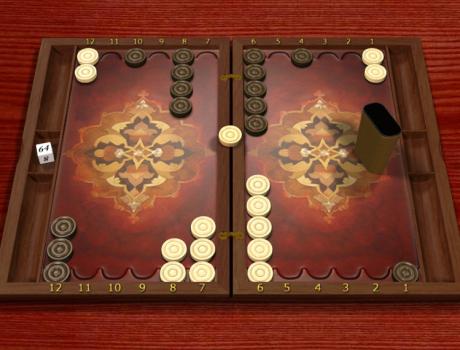
iranian.com
In "Chinese Games with Dice," by Stewart Culin, Philadelphia, 1889, is described the Japanese game of sugoroku, which is a variety of backgammon (older name, tables). In this game the board is divided into twelve parts by as many longitudinal lines, broken in the midst by an open space. The moves are made according to throws with dice. The twelve compartments are said (in a Japanese encyclopaedia) to symbolize the twelve months, and the black and white stones employed as the men, to represent day and night. On the authority of Chinese authors, the game in China is said to be as old as the third century. Thomas Hyde ("De ludis Orientalibus," Oxford, 1684, ii. 48) quotes the Arab " Ibn Chelikan " to the following effect : — " And he [the inventor of the game] arranged it according to the example of the world, to which he compared it ; for he divided the board into twelve houses, according to the number of months in the year ; and the men are thirty pieces, according to the number of days in the month ; the dice correspond to the revolving spheres, and their throws to the motions and circulation of the latter ; the points upon them answer to the number of the planets, since their positions always constitute the number seven, the one being opposite the six, the two opposed to the five, the three to the four. And he established the casts, which one obtains in playing, after the example of divine predetermination and decree, which are sometimes in his favor, sometimes against him ; he himself moves his men according to the throws, so that, if he has a quick intelligence, he is able so to arrange matters as to get the victory, and overcome his adversary, under the conditions which the dice have determined." The mediaeval Greeks adopted the same view of the game. Thus Cedrenus : " He determined that the board was the terrestrial world ; the twelve houses the number of the zodiac ; the dice-box, and grains within it, the seven planets ; the tower [into which the dice were formerly emptied], the height of heaven, from which are distributed all things good and evil." So also Suidas (tenth century). The stones used in Japan correspond to the Latin term for the men, calculi, Greek pessoi (that is, pebbles, mentioned in Homer). The number twelve may find an explanation in its representing the sum of the numbers on the two dice, without resorting to the symbolic reference. W. W. N.
https://archive.org/details/jstor-532801












Nessun commento:
Posta un commento